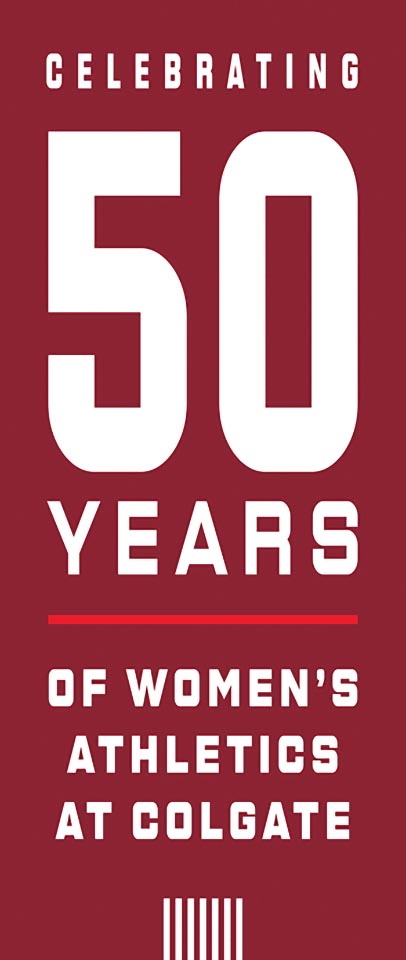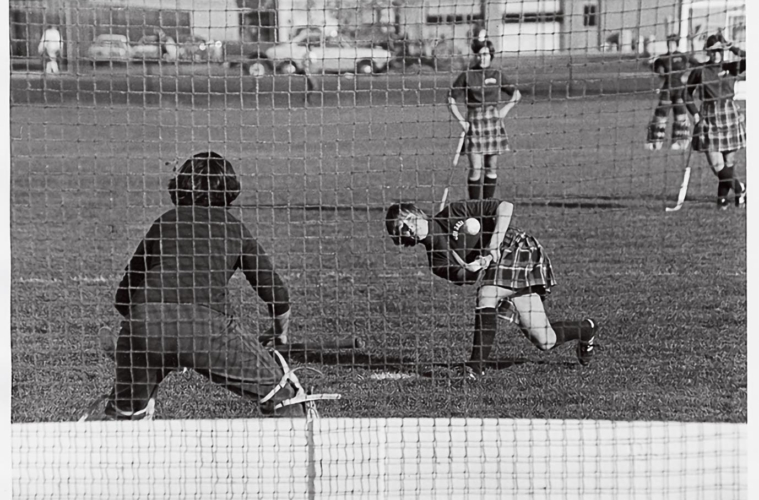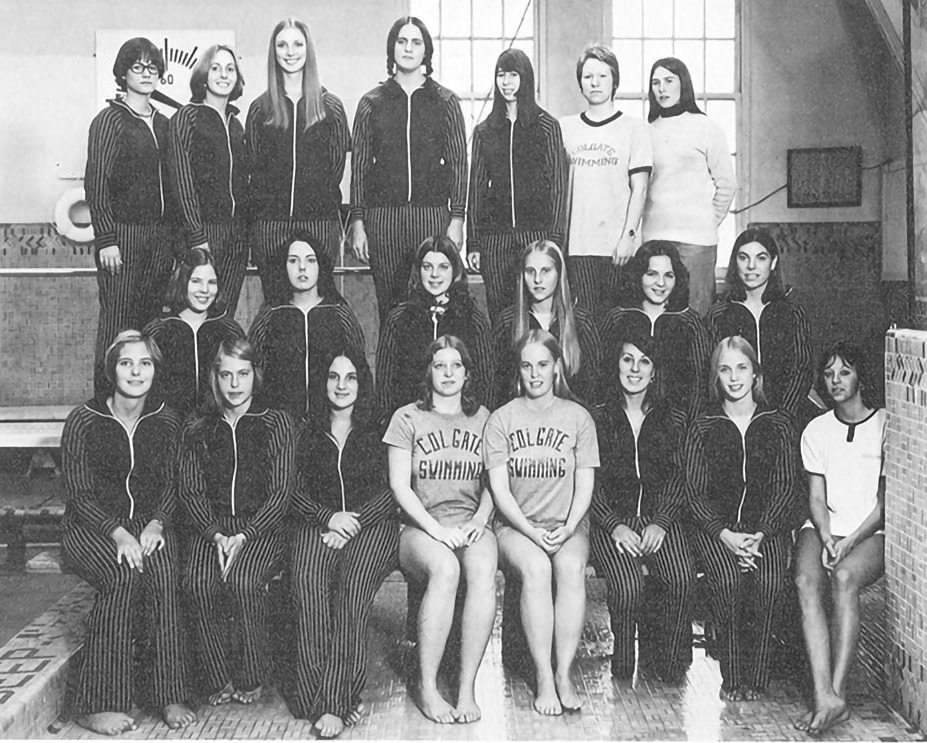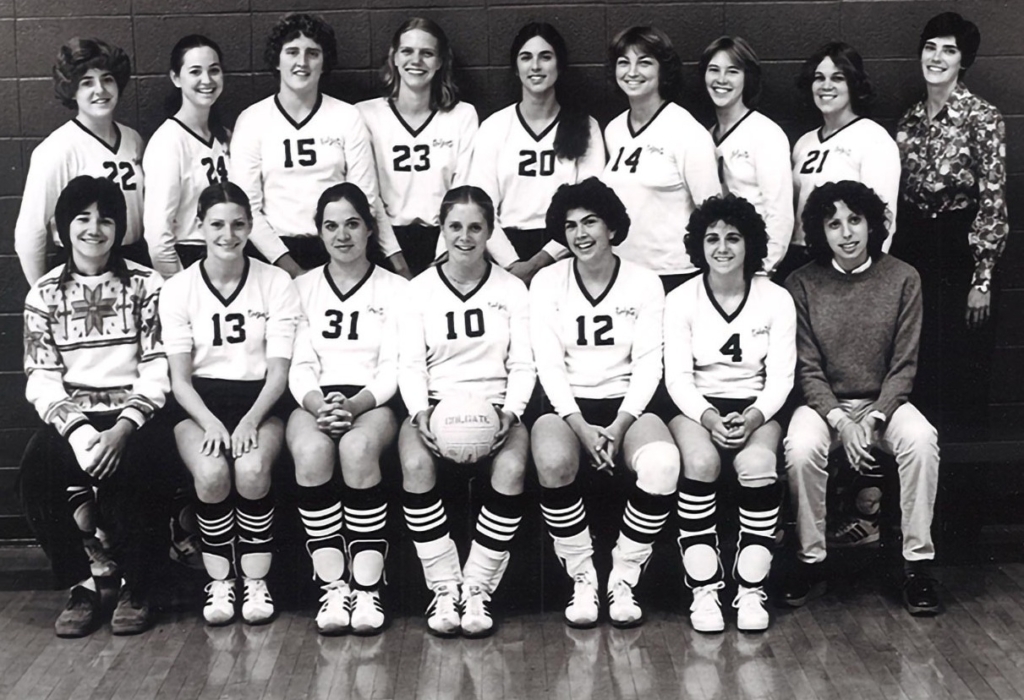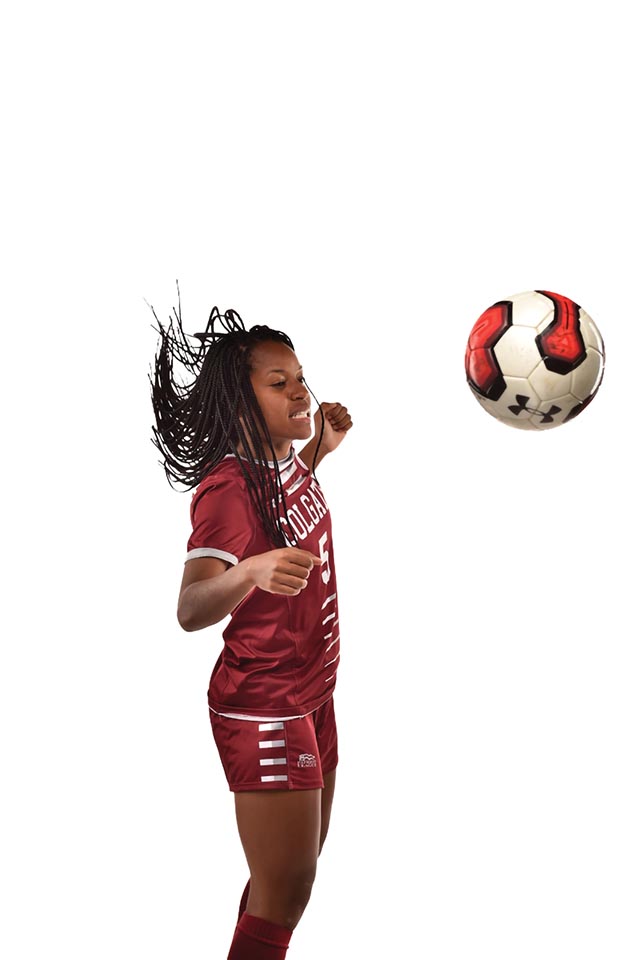
One of the most significant milestones in Colgate athletics history has arrived: 50 years of women’s varsity sports.
Women students began playing on intramural teams when the first fully coeducational Class of 1974 arrived on campus in 1970. Then in 1972, colleges and universities nationwide began being more inclusive of women in athletics with the passing of Title IX — part of the Education Amendments. “Colgate University will comply with all applicable provisions of Title IX,” said then-President Thomas Alva Bartlett. It took support from faculty members and students, administrators and board members. It took the efforts of women, who led the push to change, and the men who supported them.
With two women on the Physical Education Department staff, in 1973, women’s varsity competition began in six sports: basketball, field hockey, lacrosse, swimming and diving, tennis, and volleyball. While Colgate men’s athletics programs were part of the NCAA, women’s teams competed through the Association for the Intercollegiate Athletics for Women (AIAW), which was formed in 1971. Colgate women played at the Division II level.
The athletics opportunities for women were gradually expanding with the help of Title IX. The University’s first recruited female athletes arrived in 1976. A year later, women began to receive sports-related financial aid.
Colgate’s club softball team filed a complaint with the Office of Civil Rights in 1977, seeking varsity status. The team won its case. The popularity of women’s college sports began to grow. Fans were attending games, and women’s basketball was receiving TV contracts for tournaments. The NCAA saw a financial opportunity in women’s athletics. Colleges started to abandon the AIAW, which folded in 1982. By joining the NCAA, Colgate female student-athletes began playing against Division I opponents.
More club teams gained varsity status. Soccer made the transition in 1982, followed by cross country in 1987.
While the number of women’s varsity teams was growing, equality was lacking in other areas. All varsity women’s teams shared one locker room, and the bulk of the athletics budget was reserved for male sports. By the 1990s, nearly 40% of Colgate’s approximately 500 varsity athletes were women, although their teams received only approximately one-third of the athletics budget and the available scholarship funds.
Another significant moment in Colgate women’s athletics came when female students sought a varsity ice hockey program. Women had been playing ice hockey on campus since the early ’70s, competing in intramurals and then forming a club team. The first club teams used worn hand-me-down uniforms from the men’s team and had to borrow helmets. Players had to use figure skates. In the late 1980s, the club team had a budget of $4,000.
The movement for ice hockey became a long and dramatic process that put Title IX to the test. Petitions to form an ice hockey varsity sport were denied in 1979, 1983, 1986, and 1988.
Two lawsuits were filed, and seven years would pass before women won their battle and saw ice hockey achieve varsity status, which came in 1997. Colgate earmarked $40,000 in annual funding for women’s ice hockey, ensuring the program received adequate equipment and new uniforms. The women’s ice hockey team began competing at the Division III level.
After the success of hockey, men’s and women’s crew was next in line to become varsity sports. In the fall of 2000, the crew teams, which together had about 100 rowers, moved up to varsity status after 23 years as a club sport.
Women’s Athletics Today
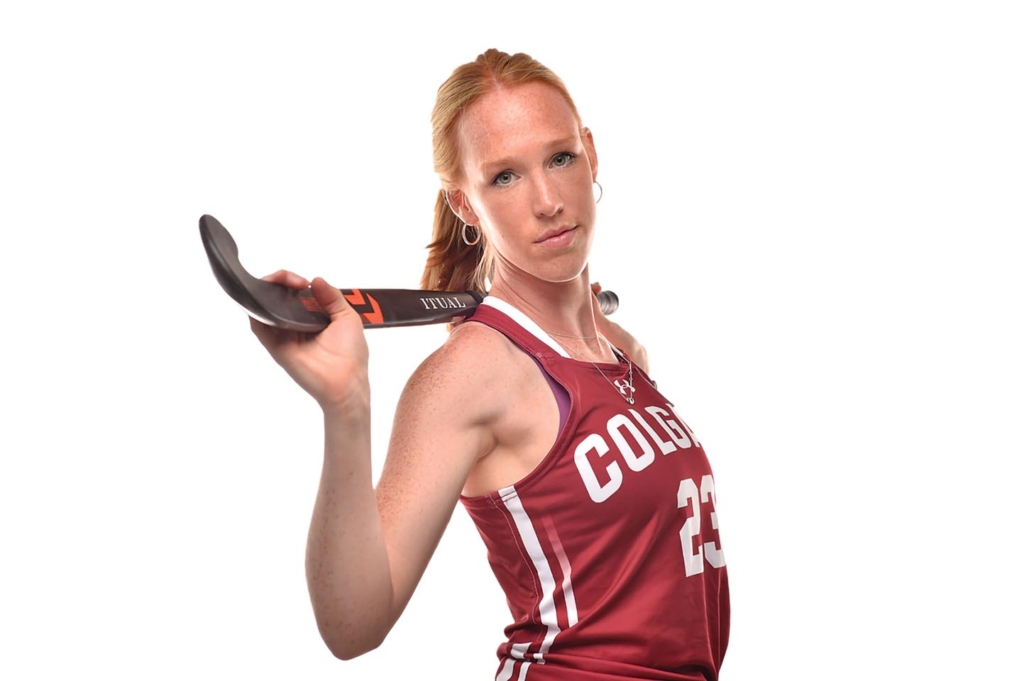
Colgate sports have come a long way since the first women’s club teams received varsity status in 1973. The University now has 13 women’s teams and 12 men’s teams that compete at the Division I level.
Whether on the court, the field, or the ice, women have been responsible for some of the most successful athletics programs in Raider history.
The women’s soccer team won nine conference titles in the ’90s. The women’s ice hockey team reached the national championship for the first time in history in 2017–18. Since then, the hockey team won the program’s first two conference championships.
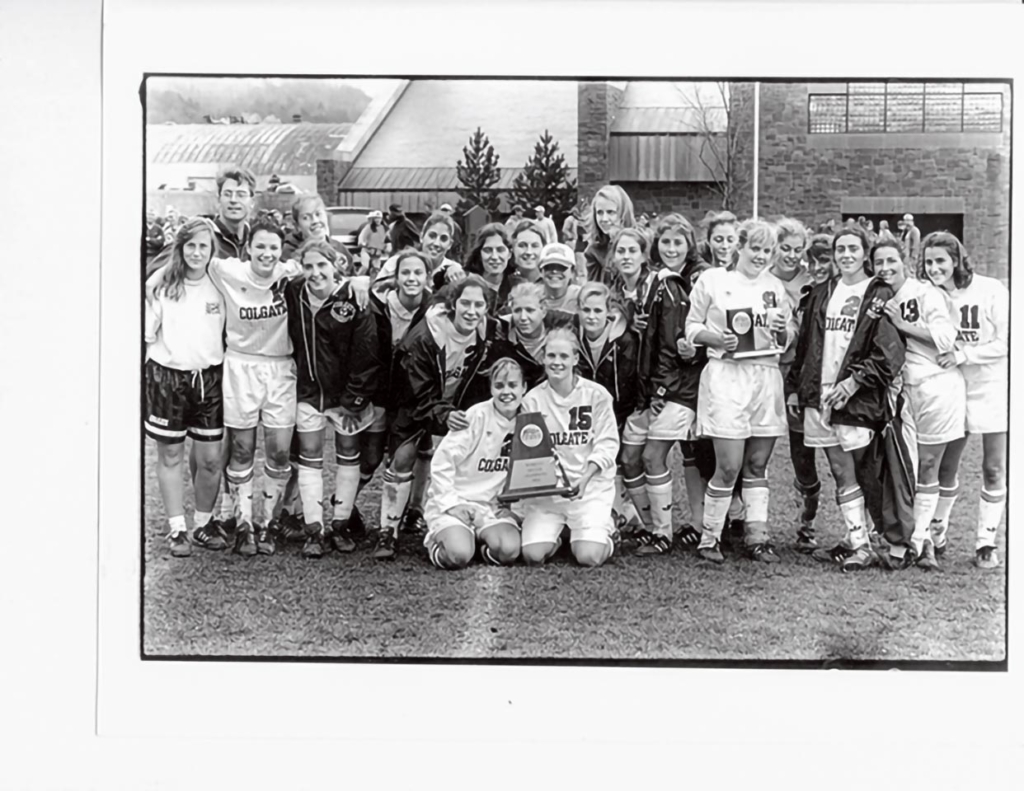
Last season, women brought home two of Colgate’s three conference titles (volleyball and ice hockey).
In December, volleyball advanced to the NCAA tournament following a season when the Raiders took on some of the best, including the two teams that reached the 2022 national championship. Two months later, women’s hockey hosted a regional quarterfinal as a top four national seed.
And the list goes on for the achievements of women in competition.
Colgate’s 25 varsity teams continue to draw top recruits from across the country, many of them women.
Women have taken their place among Colgate’s Hall of Honor. The names include Sandra Baur Bixby ’76, a member of the first varsity teams in field hockey, basketball, and lacrosse in ’73–’74. She’s known as one of Colgate’s founding mothers.
There’s also Gail Majdalany ’79, Colgate’s first woman all-American diver. The 2022 Hall of Honor welcomed 14 new members, including six women.
Whether on the court, the field, or the ice, women have been responsible for some of the most successful athletics programs in Raider history.
Women have also become coaches and taken on various leadership roles. In 2012, Victoria Chun ’91, a stand-out volleyball player and coach, became the first woman to serve as the athletics director. She was also the first Asian American woman athletics director in NCAA Division I history.
Today, Nicki Moore is vice president and director of athletics, a role she began in 2018. Through this appointment, Colgate became the second-ever Division I program to hire two women athletics directors in succession.
Under Moore’s leadership, Colgate has improved the infrastructure for many women’s sports, enhanced equipment, and launched the first women’s program endowment. In addition, the University has added athletics scholarships and financial aid to several women’s sports.
“Colgate women are a special group — they have advocated for themselves over the years, and through that advocacy, have improved the opportunities for all women on campus,” Moore says. “It means that while we do have a rich history, 50 years is still a relatively recent history, and so we are still today in the early stages of building the women’s program — particularly when you compare it to the 200 years of the men’s program.
“Thus, being intentional and bold today in enhancing and advancing opportunities for women student-athletes gives Colgate the best chance to be wildly successful — even on the national stage — in these programs down the road.”
As Colgate embarks on its Third-Century Plan, upgrades will be made to athletics facilities, with the most extensive renovations coming to the Reid Athletic Center. Reid was built in 1959, when Colgate was an all-male campus with 1,500 students. While women saw their club teams become varsity sports, facilities were not designed for female athletes.
While improvements over the years have provided women’s teams with more adequate facilities, the Reid renovations will provide Colgate with a facility designed for a coeducational campus. That means significant improvements to locker rooms, team rooms, file review spaces, and the coaches’ offices, especially for women’s sports.
Men’s and women’s basketball teams will enjoy the exact same square footage and amenities to their facilities. And volleyball will be elevated to the same level.
“While men’s sports will also see significant enhancements, in Reid, we have been very intentional to ensure all new facility projects are planned and built with equity as an important driver,” Moore says.
Stay tuned for more stories celebrating women’s athletics in upcoming issues.
